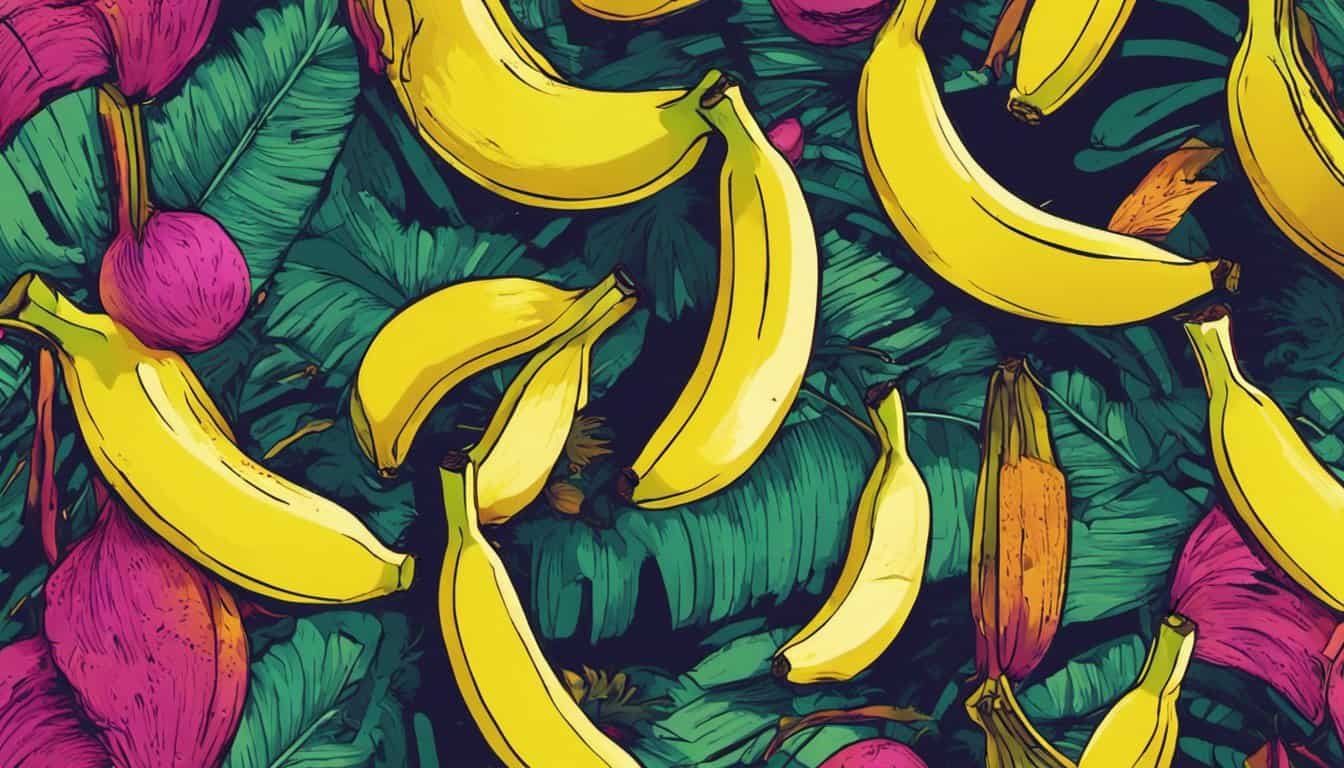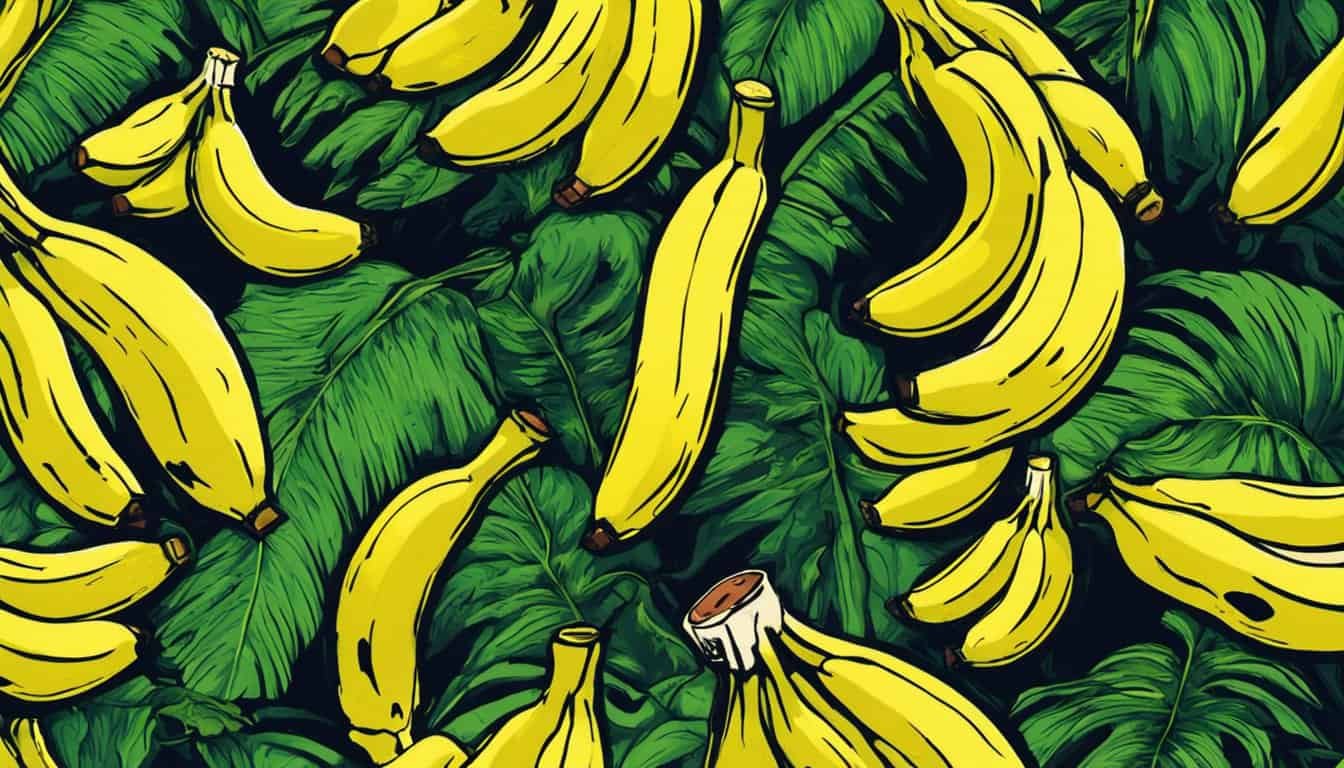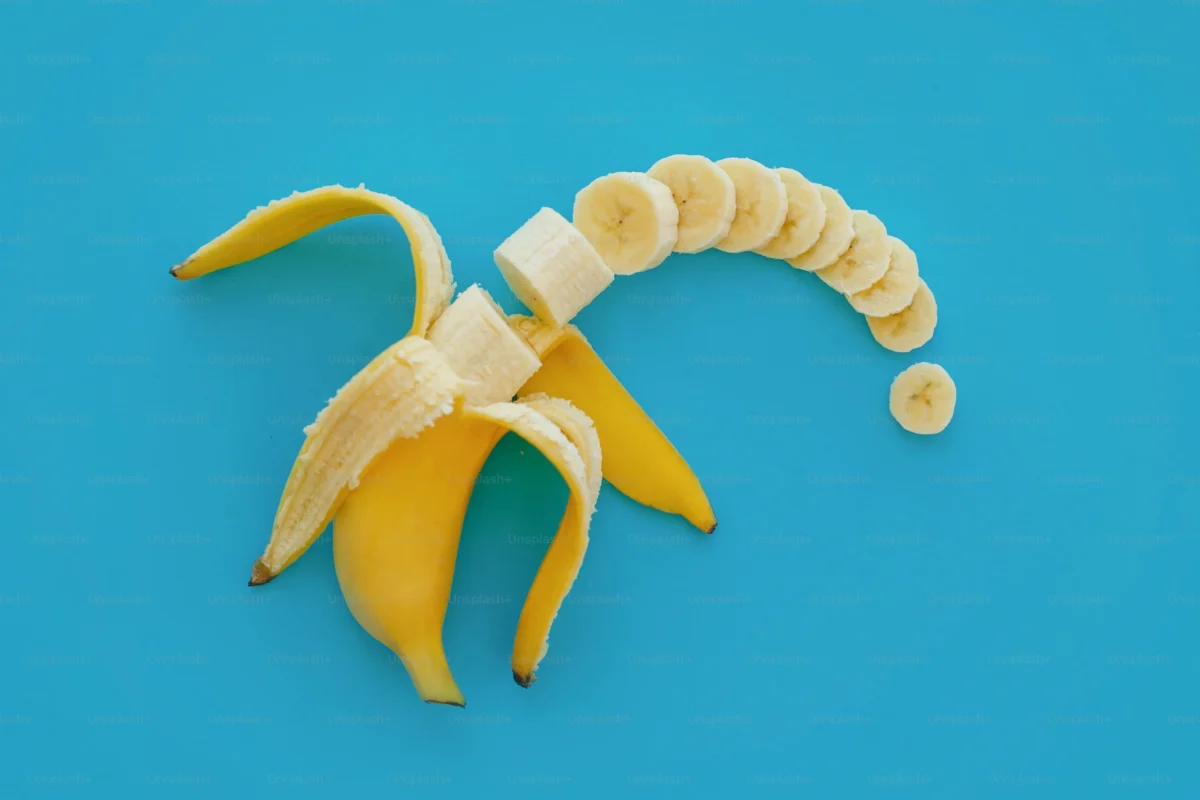Key Takeaways
- Diverse Macronutrient Profiles: Different banana varieties offer varying levels of carbohydrates, proteins, and fats, catering to diverse dietary needs and energy requirements.
- High Potassium and Magnesium: Plantains provide the highest potassium and magnesium content, supporting heart health and muscle function, while other varieties like Cavendish and Red also contribute significantly to mineral intake.
- Rich in Vitamins and Antioxidants: Red bananas boast higher levels of vitamin C and antioxidants, enhancing immune function and protecting against oxidative stress.
- Varied Dietary Fiber Content: Lady Finger bananas lead in dietary fiber, promoting better digestion and stable blood sugar levels, making them ideal for digestive health.
- Caloric Differences for Dietary Goals: Plantains are higher in calories, suitable for energy-intensive activities, whereas Red and Lady Finger bananas are lower in calories, perfect for calorie-conscious diets.
- Low Fat Across Varieties: All banana types maintain a low fat content, making them an easy addition to various meals without significantly increasing fat intake.

Bananas are a beloved fruit, but not all bananas are created equal. I’ve always wondered how different varieties compare nutritionally and what that means for our health. Whether you’re a fitness enthusiast or just looking for a tasty snack, understanding these differences can make a big impact on your diet.
Overview of Banana Varieties
Bananas come in various shapes, sizes, and colors, each with distinct nutritional profiles. Understanding these varieties helps me choose the best ones for my recipes and health goals.
Cavendish Bananas
Cavendish bananas are the most common variety worldwide. They provide about 105 calories per 100 grams, 23 grams of carbohydrates, and 1.3 grams of dietary fiber, making them a reliable source of energy and nutrients.
Plantain Bananas

Plantain bananas differ from Cavendish by being starchier and less sweet. They contain approximately 122 calories per 100 grams, 31 grams of carbohydrates, and 2.3 grams of dietary fiber, ideal for cooking in various savory dishes.
Red Bananas
Red bananas offer a sweeter taste and creamier texture compared to yellow varieties. With around 90 calories per 100 grams, 23 grams of carbohydrates, and 2.6 grams of dietary fiber, they also provide higher levels of vitamin C.
Other Notable Varieties
Other notable banana varieties include Lady Finger bananas, known for their sweetness and smaller size; Blue Java bananas, which taste like vanilla ice cream; and Manzano bananas, offering an apple-like flavor. Each variety contributes unique flavors and nutritional benefits to different recipes and diets.
Macronutrient Differences
Exploring the macronutrient profiles of different banana varieties reveals distinct nutritional benefits. Each type offers varying levels of carbohydrates, proteins, and fats to suit different dietary needs.
Carbohydrate Content
Carbohydrate levels differ significantly among banana varieties, influencing their suitability for energy-focused diets.
| Banana Variety | Carbohydrates (g per 100g) |
|---|---|
| Cavendish | 23 |
| Plantain | 32 |
| Red | 22 |
| Lady Finger | 20 |
| Blue Java | 24 |
| Manzano | 21 |
Higher carbohydrate content in plantains makes them ideal for hearty meals, while lower-carb options like Lady Finger and Manzano bananas cater to lighter dietary preferences.
Protein Levels
Protein content in bananas varies slightly across different varieties, contributing modestly to daily protein intake.
| Banana Variety | Protein (g per 100g) |
|---|---|
| Cavendish | 1.3 |
| Plantain | 1.1 |
| Red | 1.0 |
| Lady Finger | 1.5 |
| Blue Java | 1.2 |
| Manzano | 1.1 |
Although bananas are not a significant protein source, varieties like Lady Finger offer a marginally higher protein content, supporting muscle maintenance when included in a balanced diet.
Fat Content
Fat content in bananas remains consistently low across all varieties, making them suitable for low-fat dietary plans.
| Banana Variety | Fat (g per 100g) |
|---|---|
| Cavendish | 0.3 |
| Plantain | 0.4 |
| Red | 0.3 |
| Lady Finger | 0.2 |
| Blue Java | 0.3 |
| Manzano | 0.3 |
With minimal fat content, all banana varieties integrate easily into various recipes without significantly altering the fat intake of meals.
Micronutrient Variations

Exploring the micronutrient differences among banana varieties reveals their unique health benefits. Each variety offers a distinct profile of vitamins and minerals that can enhance your diet.
Vitamin Profiles
Different banana varieties contain varying levels of essential vitamins:
Vitamin C
- Red bananas lead with approximately 8.7 mg per 100 grams, supporting immune function.
- Cavendish provides around 8.7 mg per 100 grams as well.
- Plantains offer about 30 mg per 100 grams, significantly higher for immune health.
Vitamin B6
- All varieties are rich in vitamin B6, crucial for metabolism and brain health.
- Cavendish bananas contain approximately 0.4 mg per 100 grams.
- Plantains have around 0.3 mg per 100 grams.
| Vitamin | Cavendish (per 100g) | Plantain (per 100g) | Red Banana (per 100g) |
|---|---|---|---|
| Vitamin C | 8.7 mg | 30 mg | 8.7 mg |
| Vitamin B6 | 0.4 mg | 0.3 mg | 0.4 mg |
Mineral Content
Banana varieties also differ in their mineral content, offering various health benefits:
Potassium
- Cavendish bananas provide about 358 mg per 100 grams, essential for heart health.
- Plantains contain approximately 550 mg per 100 grams, beneficial for blood pressure regulation.
- Red bananas offer around 358 mg per 100 grams.
- All varieties contribute to magnesium intake, important for muscle function.
- Cavendish bananas have about 27 mg per 100 grams.
- Plantains offer roughly 37 mg per 100 grams.
| Mineral | Cavendish (per 100g) | Plantain (per 100g) | Red Banana (per 100g) |
|---|---|---|---|
| Potassium | 358 mg | 550 mg | 358 mg |
| Magnesium | 27 mg | 37 mg | 27 mg |
Understanding these micronutrient variations helps in selecting the right banana variety to fit your nutritional needs and culinary creations.
Dietary Fiber and Antioxidant Levels
I’m thrilled to dive into the nutritional richness of different banana varieties, especially when it comes to dietary fiber and antioxidants. These components are essential for maintaining a healthy digestive system and protecting our bodies from oxidative stress.
Dietary Fiber Content
Dietary fiber supports digestion and keeps you feeling full longer. Here’s how fiber varies among banana types:

| Banana Variety | Dietary Fiber (g per 100g) |
|---|---|
| Cavendish | 2.6 |
| Plantain | 2.3 |
| Red | 2.5 |
| Lady Finger | 2.8 |
| Blue Java | 2.7 |
| Manzano | 2.4 |
« Rare and Exotic Bananas You’ve Never Heard Of: Discover Unique Varieties Today
Growing Your Own Banana Tree: Choosing the Right Variety for Any Garden Success »
Lady Finger bananas offer the highest fiber content, making them a great choice for promoting digestive health and maintaining stable blood sugar levels.
Antioxidant Levels
Antioxidants help protect your cells from damage caused by free radicals. Here’s a comparison of antioxidant levels across different banana varieties:
| Banana Variety | Antioxidant Capacity (mg TE per 100g) |
|---|---|
| Cavendish | 200 |
| Plantain | 180 |
| Red | 220 |
| Lady Finger | 210 |
| Blue Java | 205 |
| Manzano | 195 |
Red bananas lead the pack with the highest antioxidant capacity, providing enhanced protection against oxidative stress and supporting overall health.
By understanding these differences, you can choose the banana variety that best fits your nutritional needs and culinary creations.
Caloric Comparison
Different banana varieties offer varying caloric content, catering to diverse dietary needs. Here’s a breakdown of calories per 100 grams for each variety:
| Banana Variety | Calories (per 100g) |
|---|---|
| Cavendish | 105 |
| Plantain | 122 |
| Red | 90 |
| Lady Finger | 89 |
| Blue Java | 100 |
| Manzano | 98 |
Plantains provide the highest calories, supporting energy-intensive activities. In contrast, Red and Lady Finger bananas have lower caloric values, making them excellent choices for lighter snacks or calorie-conscious diets.
Health Benefits by Variety
As a banana enthusiast, I’ve discovered that each banana variety offers unique health benefits:
- Cavendish: Delivers 358 mg of potassium per 100 grams, supporting muscle function and blood pressure regulation.
- Plantain: Contains 550 mg of potassium and 32 grams of carbohydrates per 100 grams, ideal for energy and electrolyte balance.
- Red Banana: Provides 8.7 mg of vitamin C and 220 mg TE of antioxidants per 100 grams, enhancing the immune system and protecting cells.
- Lady Finger: Offers 2.8 grams of dietary fiber per 100 grams, promoting digestion and maintaining satiety.
- Blue Java: Rich in antioxidants and vitamins, it contributes to cellular health and overall well-being.
- Manzano: Balances essential vitamins and minerals, supporting general health and providing a sweet, nutritious option.
Each variety not only adds distinct flavors to recipes but also caters to specific nutritional needs, making bananas a versatile addition to any diet.
Conclusion
Exploring the variety of bananas out there has been eye-opening. Each type brings something unique to the table whether it’s the robust energy from plantains or the sweet boost from red bananas.

Personally understanding these differences helps me make better choices for my diet and recipes. Whether I’m aiming for a quick snack or planning a meal knowing which banana fits my needs makes all the difference.
Next time you reach for a banana consider trying a new variety and see how it enhances your nutrition and taste experiences. It’s a simple way to add some variety and extra benefits to your daily routine.
Frequently Asked Questions
What are the main nutritional differences among banana varieties?
Different banana varieties offer unique nutritional profiles. For example, Cavendish bananas provide a reliable energy source with 105 calories per 100 grams and 358 mg of potassium. Plantains are starchier with higher carbohydrates (32 g) and calories (122 kcal) per 100 grams, making them ideal for energy-focused diets. Red bananas are sweeter, richer in vitamin C (8.7 mg), and lead in antioxidant capacity. Lady Finger bananas offer lower carbs (89 kcal) and higher fiber (2.8 g), supporting digestion. Each variety caters to specific dietary needs and culinary uses.
Which banana variety is best for energy-focused diets?
Plantains are the best choice for energy-focused diets due to their higher carbohydrate content, providing 32 grams per 100 grams. With 122 calories per 100 grams, they supply sustained energy, making them ideal for energy-intensive activities. Their starchier composition makes them suitable for savory dishes and meals that require longer-lasting energy, supporting athletic performance and active lifestyles.
How many calories do different banana varieties contain?
Caloric content varies among banana varieties. Plantains have the highest calories at 122 per 100 grams, supporting energy-intensive activities. Cavendish bananas offer 105 calories per 100 grams, providing a moderate energy source. Red and Lady Finger bananas are lower in calories, with 90 and 89 calories per 100 grams respectively, making them excellent choices for lighter snacks or calorie-conscious diets.
Which banana is richest in vitamin C?

Plantains and Cavendish bananas both provide approximately 8.7 mg of vitamin C per 100 grams. However, Plantains offer significantly higher vitamin C levels at 30 mg per 100 grams, making them the richest in vitamin C among the banana varieties discussed. This high vitamin C content supports the immune system and enhances overall health.
Are some bananas better for digestion?
Yes, Lady Finger bananas are particularly beneficial for digestion. They offer the highest dietary fiber content among the varieties discussed, with 2.8 grams per 100 grams. Dietary fiber supports healthy digestion, promotes regular bowel movements, and helps maintain satiety, making Lady Finger bananas an excellent choice for those seeking to improve their digestive health.
Which banana has the highest fiber content?
Lady Finger bananas have the highest fiber content, providing 2.8 grams per 100 grams. This high fiber level aids in digestion, helps maintain satiety, and supports overall digestive health. Incorporating Lady Finger bananas into your diet can contribute to better gastrointestinal function and help regulate blood sugar levels.
How do bananas support muscle function and blood pressure?
Cavendish bananas support muscle function and blood pressure regulation due to their high potassium content, offering 358 mg per 100 grams. Potassium is essential for muscle contractions, nerve function, and maintaining electrolyte balance, which helps regulate blood pressure. Including Cavendish bananas in your diet can aid in muscle maintenance and cardiovascular health.
What are the health benefits of Red bananas?
Red bananas enhance the immune system with their higher vitamin C content and rich antioxidant capacity of 220 mg TE per 100 grams. These antioxidants protect cells from free radical damage, supporting overall cellular health. Additionally, Red bananas contribute to improved immune function and may reduce the risk of chronic diseases through their potent antioxidant properties.
Can Plantains balance electrolytes?

Yes, Plantains can help balance electrolytes. They contain around 550 mg of potassium per 100 grams, which is beneficial for maintaining electrolyte balance, regulating blood pressure, and supporting proper muscle and nerve function. Including Plantains in your diet can aid in electrolyte management, especially for those engaged in regular physical activity.
Which banana variety is suitable for low-fat diets?
All banana varieties are low in fat, making them compatible with low-fat dietary plans. However, Lady Finger and Manzano bananas are particularly suitable as they have lower caloric values (89 and 90 calories per 100 grams, respectively) and provide essential vitamins and minerals without adding significant fat to the diet. These varieties are excellent choices for those seeking nutritious, low-fat snacks.













